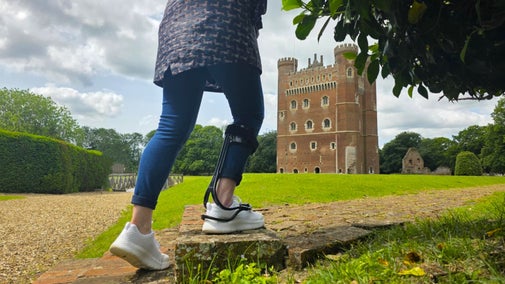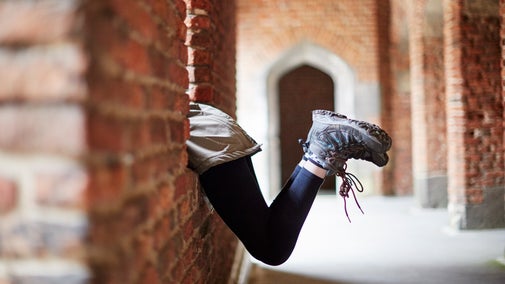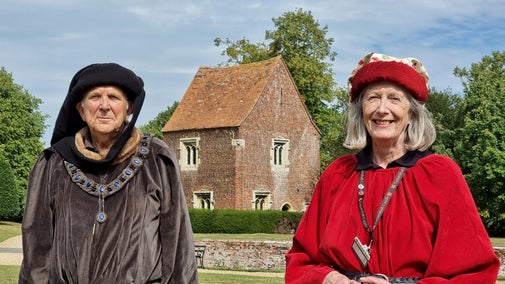
Become a member
Join today and help protect nature, beauty and history – for everyone, for ever. Enjoy access to more than 500 places with National Trust membership.
Magnificent 15th century red brick castle - what wealth and power looks like
Sleaford Road, Tattershall, Lincolnshire, LN4 4LR

| Asset | Opening time |
|---|---|
| Castle | Closed |
The Castle is now closed for the winter and is due to re-open in the spring.
| Ticket type | With Gift Aid | Without Gift Aid |
|---|---|---|
| Adult (18+) | £11.00 | £10.00 |
| Child (5-17) under 5s free | £5.50 | £5.00 |
| Family (2 Adults and up to 3 children) | £27.50 | £25.00 |
| 1 adult and up to 3 children | £16.50 | £15.00 |
| Group (Adult 18+) | £9.50 | |
| Group (Child 5-17) | £4.75 |
Our second-hand bookshop is located in the visitor reception building.
Accessed by a single track drive with overhanging trees.
Dogs must be kept on a short lead. Assistance dogs only are permitted inside the Great Tower.
Our charming wedding venue accommodates up to 80 people.
Toilet facilities are located approximately 80m from visitor reception and approximately 180m from the Great Tower. There are no toilet facilities in the Great Tower.
Drop-off point available. Accessible toilet. Grounds contains gravel paths and uneven grassy areas. Accessible ramp leading to ground-floor parlour chamber. 149 steps to the top of the tower. No lift to upper floors.
A toilet with adaptations is next to the ladies toilet in the main toilet block. The toilet block is at the end of an 80 metre gravel path and the gravel can be relatively deep in places. The accessible drop-off point is close by; visitors making use of the drop-off point may drive as far the toilet block provided a member of staff is notified in advance.
Our drop-off point is approximately 30 metres from our visitor reception building, is through a gate which is normally partially closed. Please phone (01526 342543) or email (tattershallcastle@nationaltrust.uk) in advance if you would like to use the drop-off point so we can direct you to the correct gate and ensure it is opened for you upon your arrival.
Our visitor reception building has an induction loop.
We have a small shop and second-hand bookshop on the ground floor of our visitor reception building, which has ramped access.
On days when we host weddings the ground floor of the Great Tower is inaccessible for a period of approximately 90 minutes. Please contact us if you have a query relating to the accessibility of the Great Tower on a particular day.
An information folder in the Parlour chamber of the Great Tower (ramped access) contains photographs of and information about the upper floors of the building.
There is ramped access to the visitor reception building and to the Parlour (ground floor) chamber of the Great Tower.
There is seating on all floors of the Great Tower except for the Basement, roof level and battlements. There are numerous benches around the Castle grounds.
The grounds contain gravel paths and uneven grassy areas.
Access information for Tattershall Castle

The National Trust’s pawprint system gives all the places in its care a rating. More information is in the National Trust members’ handbook. Tattershall Castle is a two pawprint rated place.

Find out why Tattershall Castle is one of the most appealing venues for wedding ceremonies, photographs and drinks receptions throughout the whole year.

An imposing 15th-century red-brick keep, constructed by an influential medieval lord as a statement of wealth and power, with seven storeys to explore.
A double moat surrounded by well-tended grounds supporting a variety of plants and wildlife and the last-remaining ruins of the wider Castle complex.
A compact and charming 15th century building where you will find our friendly team. It's also where you can pick up a souvenir, buy a cold drink or snack, and browse our second-hand bookshop.
Ascend the Great Tower for stunning views across the Lincolnshire countryside from the Fens to the Wolds. Expect to see up to 18 miles on a clear day.
Discover the many things that you can see and do on your visit to Tattershall Castle. During your visit you might enjoy walking the battlements and admiring the stunning views, enjoying a family picnic in the grounds, or exploring the fascinating historical graffiti in the Great Tower. Click on the image for more ideas.

Entertain the whole family Tattershall Castle. Discover unique stories in the tower, go on an adventure in the grounds and take a break with a tantalising selection of food and drink from visitor reception.

A free 1.2-mile walk, outside the castle grounds, mixing highlights of the historical landscape with the natural world.

Find out what you can purchase and where you can eat when you visit Tattershall Castle.


A cosy cottage within the grounds of Tattershall Castle in Lincolnshire.

A cosy cottage in the historic grounds of Tattershall Castle just beyond the outer moat, a short walk from the historic village of Tattershall.
This spring, treat the whole family to a world of adventure at Tattershall Castle on an Easter trail. The trail may be bought on the day.
Are you ready for an adventure? The Newt Quest Trail is launching in May! Solve clues, explore nature, and become a Newt Protector.
Big skies, bold games, and brilliant family fun—summer comes alive at Tattershall Castle!
Experience an action-packed medieval tournament at Tattershall Castle with Buckingham's Retinue.
Enjoy FREE entry to Tattershall Castle on Saturday 12 and Sunday 13 September (10.30am - 4.30pm, last entry 3.30pm).
Rising proudly from the flat Lincolnshire fens, Tattershall Castle, with its huge Gothic fireplaces and church-like windows, was designed to impress. Built by Lord Ralph Cromwell, Treasurer of England, it was designed to show off his wealth, position and power.
The Great Tower is one of the earliest and finest surviving examples of English medieval brickwork and was saved from exportation to America by Lord Curzon of Kedleston in 1911. Take the winding staircase, wander through vast echoing chambers and walk out onto the battlements revealing the beauty of the Lincolnshire countryside.
Delve into the rich and dramatic past of Tattershall Castle.

Explore the objects and works of art we care for at Tattershall Castle on the National Trust Collections website.

The National Trust has shared concerns about National Grid's plans to build a new high-voltage electricty transmission line between Grimsby and Walpole.

Discover the work that goes into maintaining the historically significant medieval castle at Tattershall.

Join the great team of volunteers bringing Tattershall Castle’s medieval history to life.


Join today and help protect nature, beauty and history – for everyone, for ever. Enjoy access to more than 500 places with National Trust membership.
By sharing your email address you’re agreeing to receive marketing emails from the National Trust and confirm you’re 18 years old or over. Please see our for more information on how we look after your personal data.

